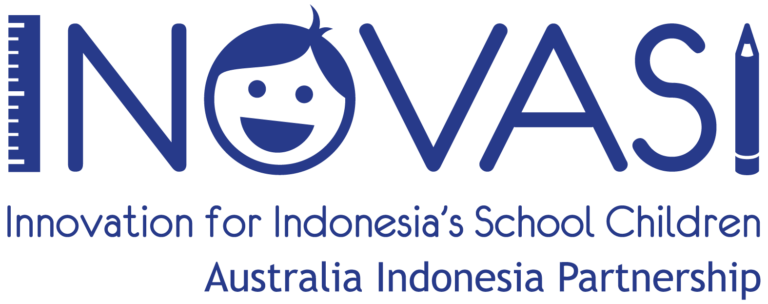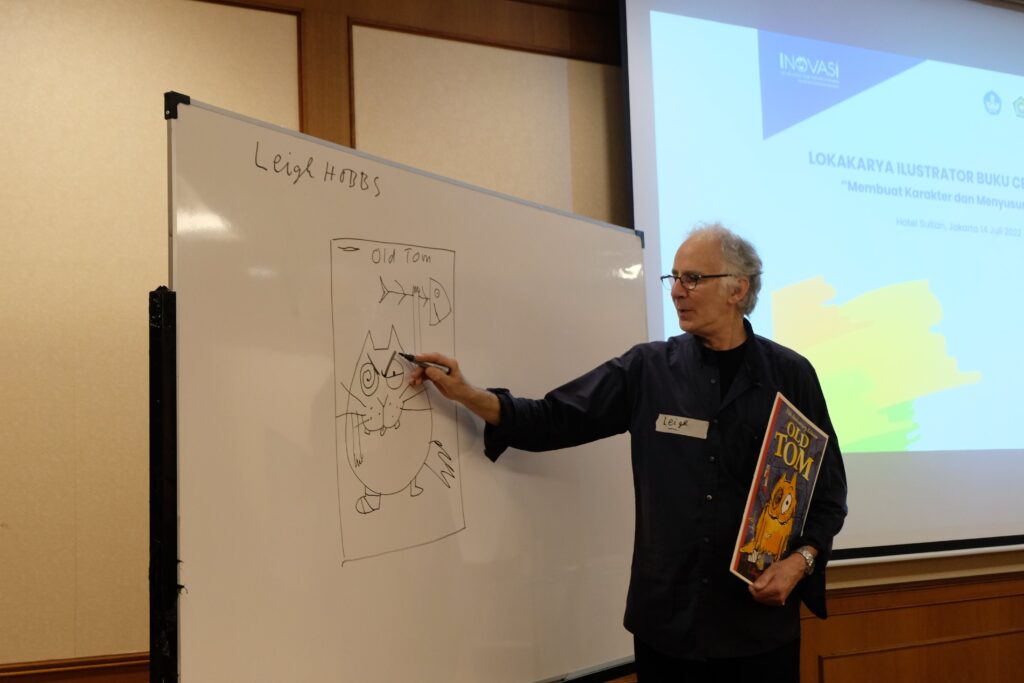
Illustrations in picture books help encourage children’s reading habits. Illustrations motivate children to read the text, increasing their interest in reading. It also helps their text comprehension skills.
In supporting the provision of quality picture books for children, the Centre of Books of the Agency of Education Standards, Curriculum, and Assessment of the Ministry of Education, Culture, Research, and Technology (MoECRT) conducted mentoring for book illustrators through a workshop entitled “Kekuatan Ilustrasi pada Buku Cerita Anak” or “The Power of Illustrations in Children’s Storybooks”. This workshop was taken place at Aston Hotel, Bogor, on July 12-13, 2022.
Illustrations in children’s books are crucial in increasing their concentration in reading texts. Further, an attractive presentation will boost children’s interest in books. “Hopefully, the book ecosystem in Indonesia will grow healthier, and bookmakers can play their respective roles with quality outputs,” explained Supriyanto, the Head of the Centre of Books, Agency of Education Standards, Curriculum, and Assessment of the MoECRT. The workshop presented two illustrators, Leigh Hobbs and Evi Shelvia.
The participants, who were professional illustrators, were asked to create basic illustrations for children’s picture books through character depiction by creating illustrations and arranging words for the story development. This activity was led by Leigh Hobbs, an Australian award winning artist and an illustrator of a picture book entitled “Old Tom” .
On the first day, Leigh Hobbs asked the participants to draw the Old Tom character with their own style. Afterwards, Leigh Hobbs instructed the participants to draw various characters from a cylinder shape or domestic appliances. From these characters, the participants were told to write descriptions of their characters and behaviors.
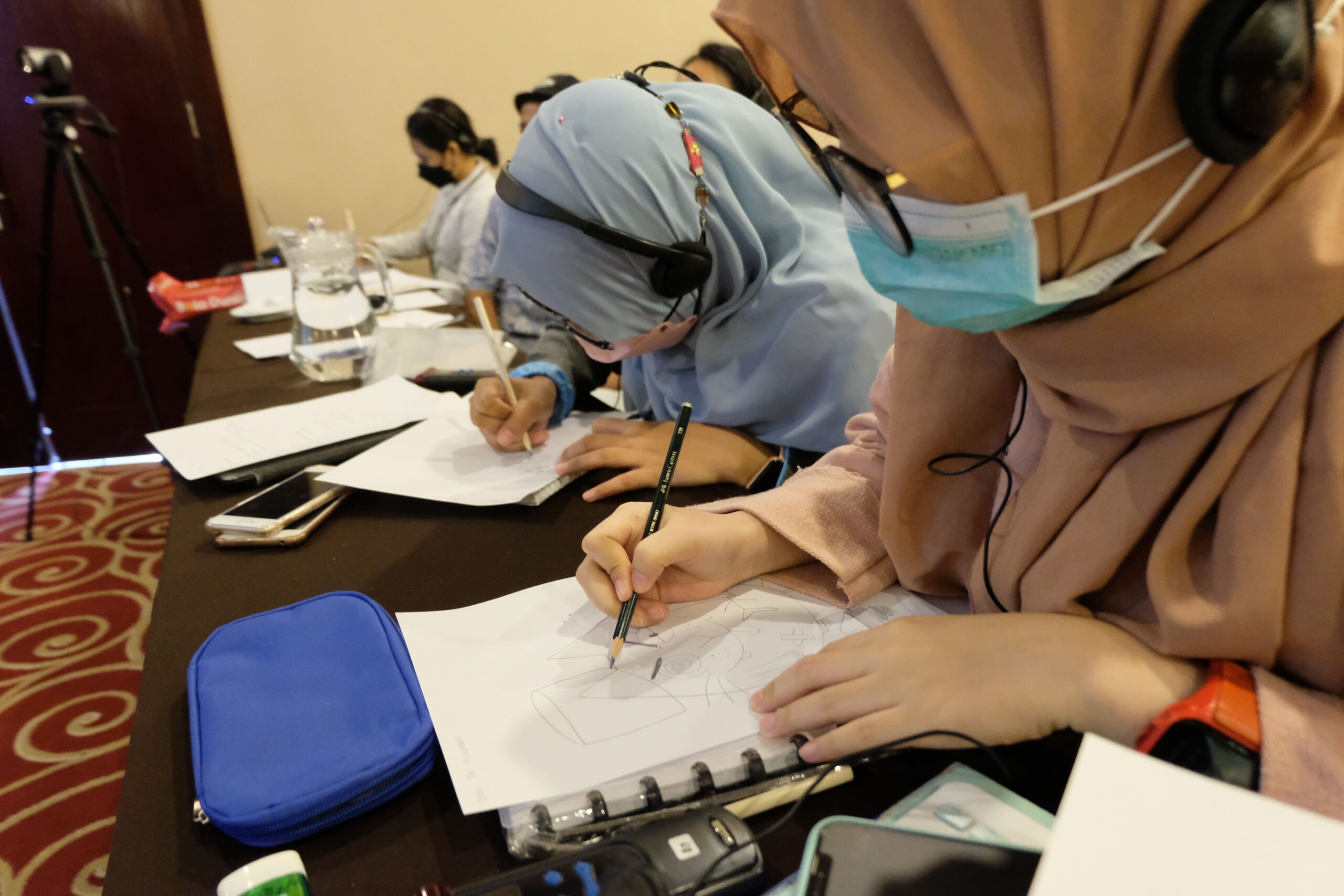
On the second day, Leigh invited children aged 3-5 years old to draw Old Tom. The children’s drawings were displayed to the participants. Their drawings reflected the innocence and taste of their target readers. Then, the participants were asked to reflect on the scratches of the children as the target readers of the picture storybooks. By looking at those drawings, the participants could evaluate whether the characters they created would attract children, were appropriate for their ages, and displayed unique characters. “Children need to be amused and engaged to enjoy the act of reading through a book that is fun. My book is created for children to have fun,” Leigh Hobbs explained.
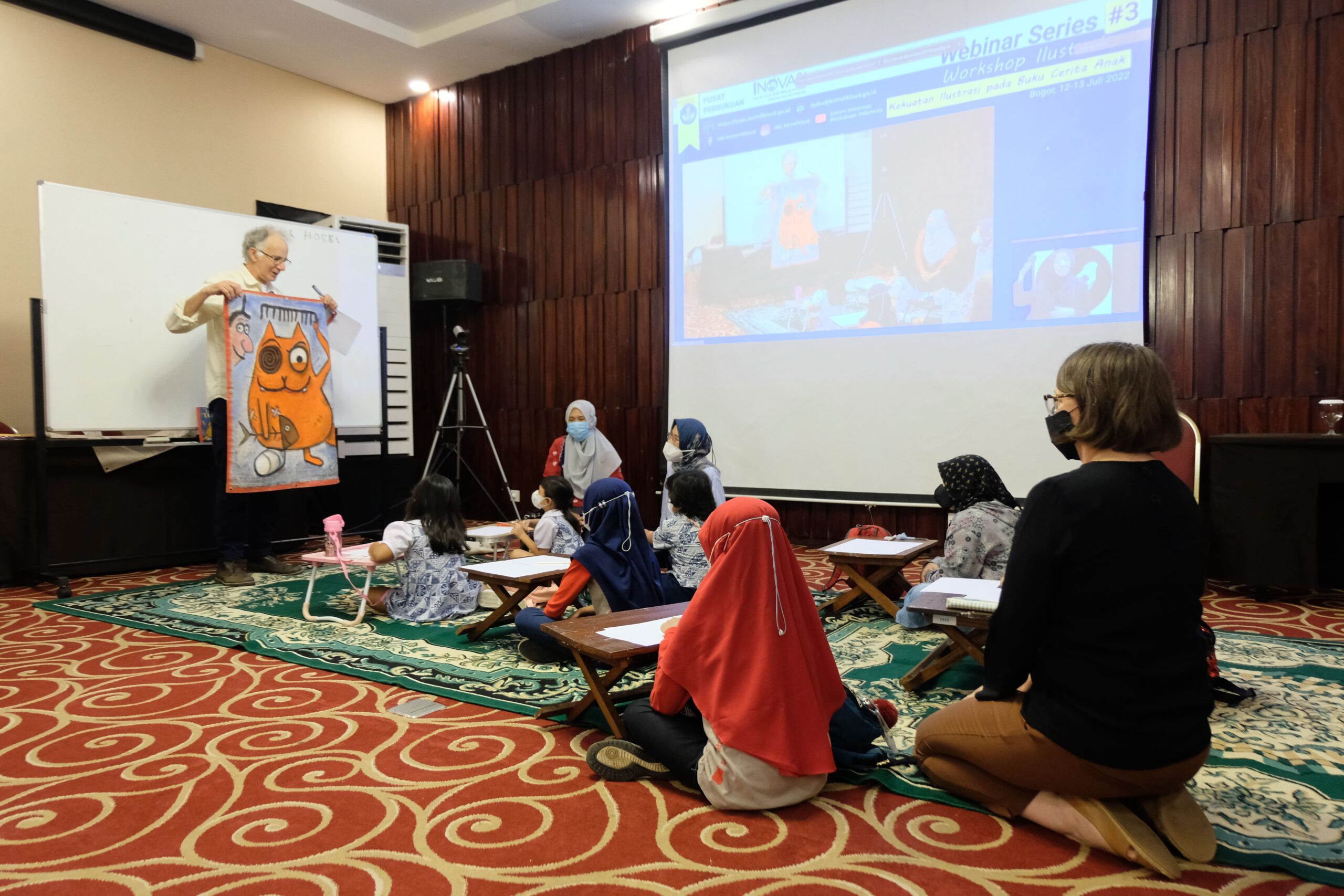
The participants were subsequently instructed to create a story using both texts and pictures. At the end of the presentation, Evi Shelvia, a senior illustrator from Indonesia, explained the role of illustrators and the lessons about creating characters. “Picture storybooks are a unique and well-balanced combination of texts and pictures that are presented in a comprehensive design to convey the meaning and purpose of the story to the target readers. The illustrator’s job is to tell the story with pictures.” Evi explained.
Challenges and Opportunities in Children’s Picture Book Ecosystem
One of the junior illustrators attending this activity, Dewi Tri Kusuma, claimed that the demand for children’s book illustrations had grown rapidly since the government promoted children’s literacy. “In producing works, we must convey the message to children in a fun way. The characters’ expressions and colour selection are highly significant components that we must pay attention to,” she added.
Apart from junior illustrators, seasoned illustrators also participated in this workshop. Sulaiman, widely known as Maman Mantox, was one of them. “In the last 29 years, the children’s picture book ecosystem hasn’t changed much. Although the demand for the illustration styles changes, the colouring, language style, and genre choices remain the same,” he explained.
Training for Teachers from INOVASI Provincial Partner
On July 14, 2022, Leigh Hobbs continued his illustration training with INOVASI provincial partners. Teachers, literacy volunteers, and district facilitators from North Kalimantan, West Nusa Tenggara, East Nusa Tenggara, and East Java attended the Children’s Storybook Illustrator Workshop at the Sultan Hotel, Jakarta. Unlike the previous two days, this activity focused on increasing the capacity of teachers to be able to produce illustrated stories to increase children’s interest in reading. Using the same method, Leigh Hobbs led the workshop for one day.
“In creating illustrations, it is critical for illustrators to understand their individual style. So, I asked them to draw Old Tom in the beginning, and indeed the results differed from one another,” Leigh Hobbs described the workshop process that day. Leigh Hobbs started by giving instructions on basic drawing tehcniques, then similar to the workshop held by the MoECRT, the participants were invited to create characters and create illustrated stories using these characters.
“Picture books are essential for primary students since they can’t read yet. With illustrations, children can look at the pictures and understand the stories without reading the text,” said Khusna, a teacher at SDN Bidiwai of East Sumba. Khusna expected that this workshop would help her create picture books as she only used texts to make stories as her teaching tool all this time.
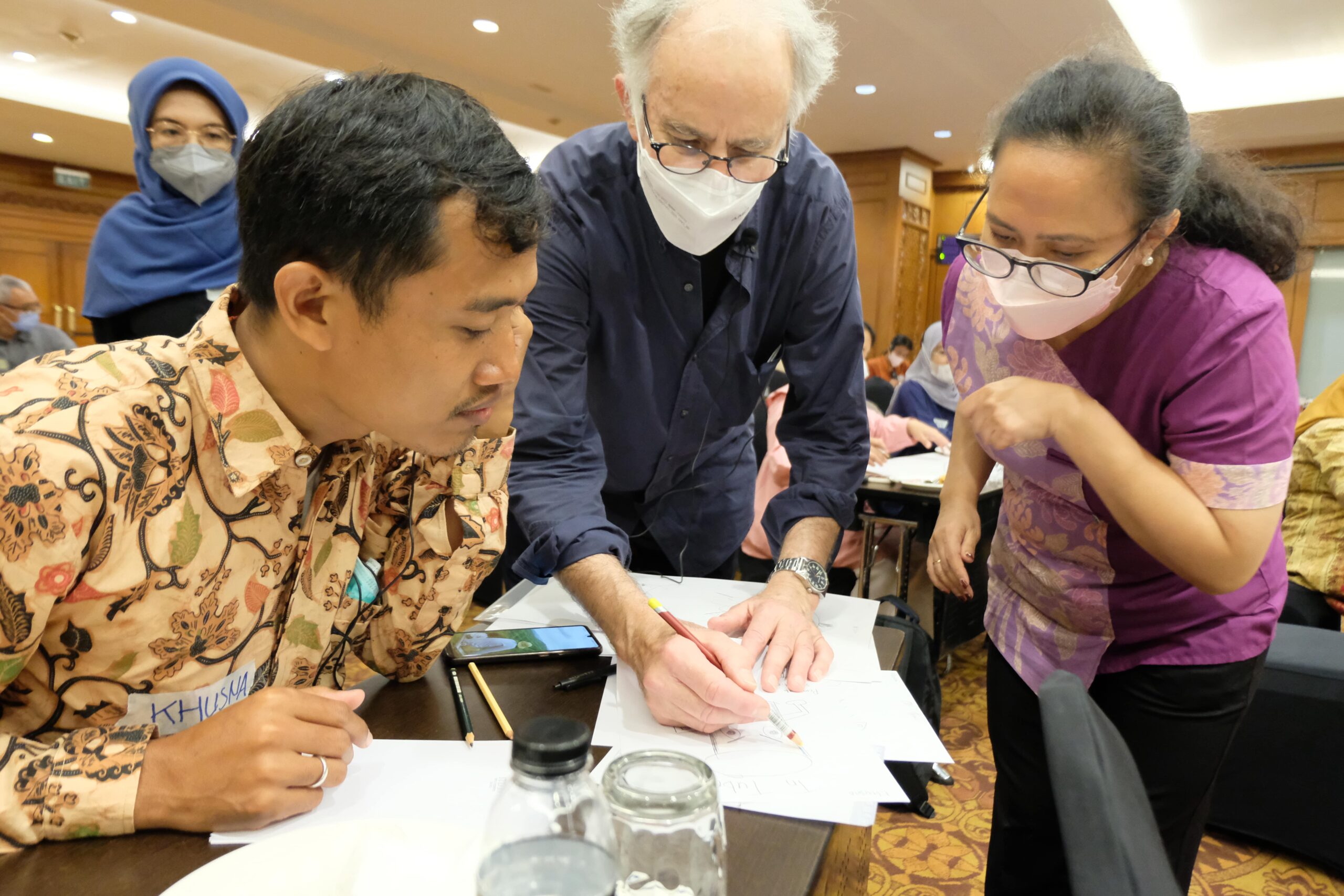
In this workshop, Mustika, a literacy volunteer and primary school teacher, explained that she looked forward to learning how to write stories to increase children’s reading interest. “Today, I learned to build characters in illustrations and write stories. Compelling characters, storylines, and colours can increase the learning interest of children in Bima,” she explained.
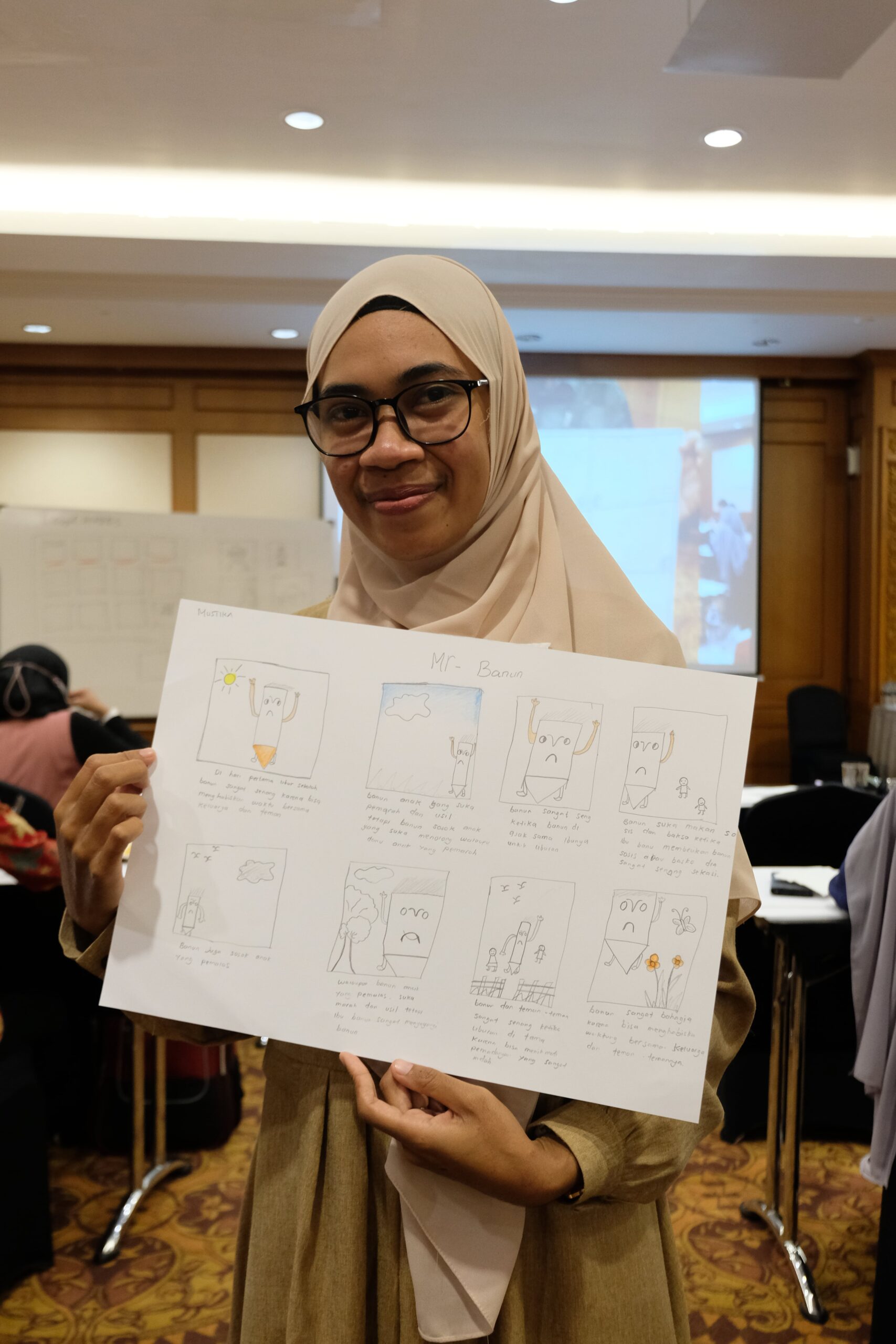
“I would love to share the knowledge I learned today with my fellow teachers in East Sumba,” Khusna stated. Mustika said a similar statement that she wanted to share the knowledge with the literacy volunteers in Bima. She explained, “We need to make our picture books to enhance children’s reading interest since they are still uncommon in our region.”
“Visual literacy is just as important. It’s how to make the kids read the picture to understand the story. Engaging is the most important word to keep the interest and to reward. To get them satisfied when they learn something,” Leigh Hobbs concluded.
One of the essential functions of illustration in children’s books is to draw children’s attention to reading the text. The pictures could make the text more enjoyable to read. In other words, children will enjoy textbooks more if they see pictures and relate them to the sentences. Picture books open the door to children’s literacy and critical thinking skills. Illustrations can present information not presented in the text and by doing so, stimulate children’s imagination and their ability to infer information and draw their own conclusions.
